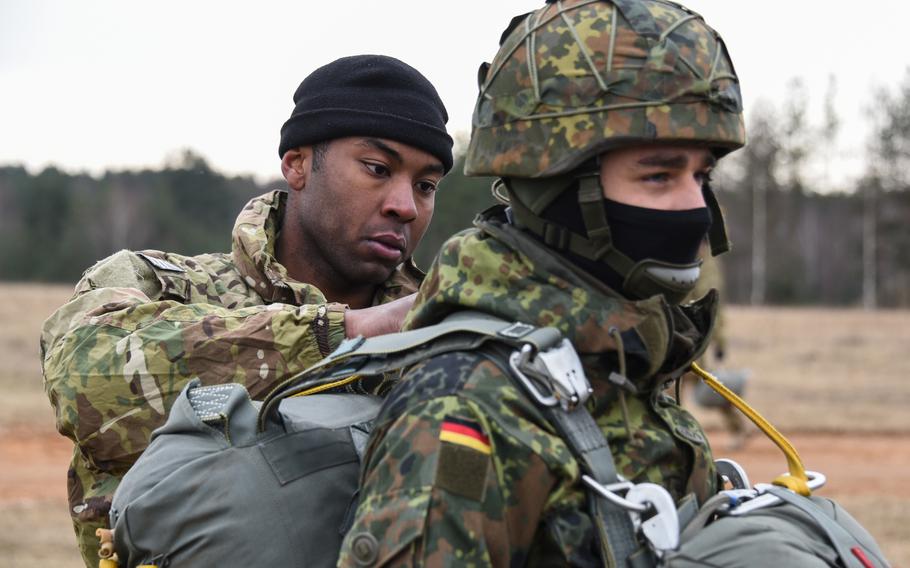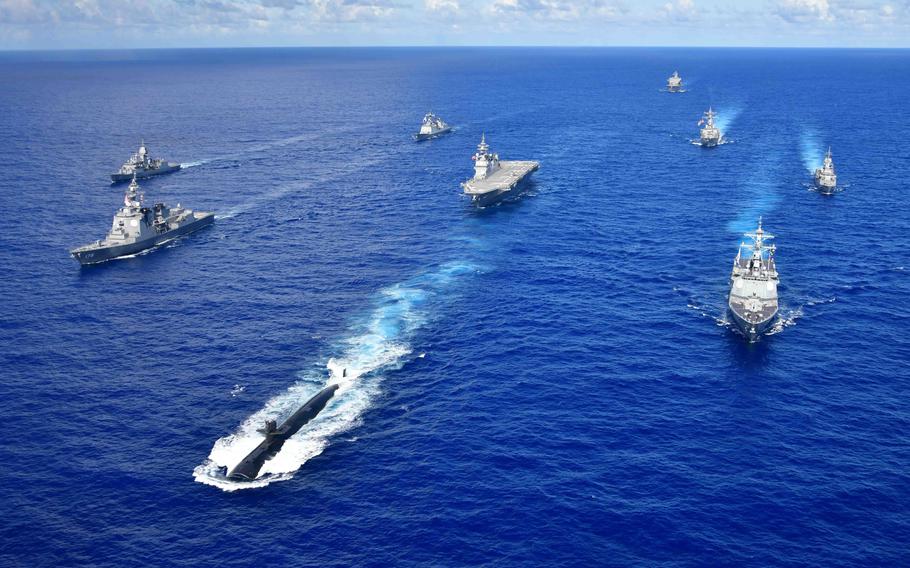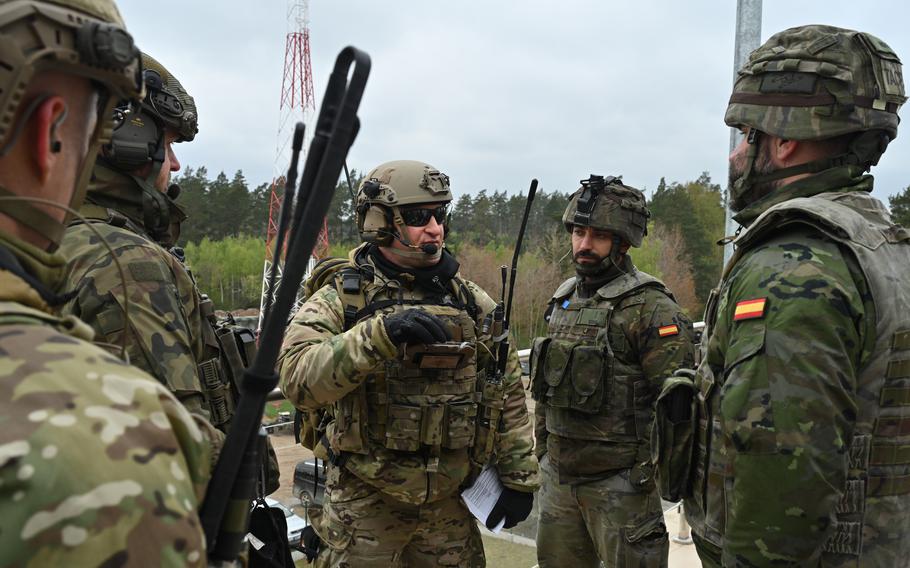
A U.S. Army paratrooper assigned to the 173rd Airborne Brigade inspects the parachute of a German paratrooper at Grafenwoehr Training Area in 2018. The Pentagon needs a new method for measuring whether countries in Europe and Asia are carrying their fair share of the security burden, according to a new Rand Corp. study. (Markus Rauchenberger/U.S. Army)
The Pentagon needs a new method for measuring whether countries in Europe and Asia are carrying their fair share of the security burden, according to a new U.S. military-sponsored study that says defense spending alone is an incomplete measure of military fitness.
The Rand Corp. study, commissioned by the Office of the Secretary of Defense, said that the United States bears 47% of the burden of providing the collective defense in Europe and Asia.
While other NATO countries and Asian allies supply more personnel and ground forces than the U.S., the American military delivers a greater share of allied air forces, naval forces and intelligence assets, the study said.
“Although the U.S. share of the costs of collective defense in Europe and Asia is certainly disproportionate, the U.S. burden is not as lopsided as some have asserted,” the study said.
A new “burden sharing index” is needed to figure out which allies need to step up more and where they should be directing their investments, the study said.

Warships from the navies of Australia, South Korea, Japan and the United States sail in formation during an exercise in the Pacific Ocean in 2020. Defense spending alone is an incomplete measure of military fitness, according to a recent Rand Corp. study, which said the Pentagon needs a new method for measuring whether countries in Europe and Asia are carrying their fair share of the security burden. (DVIDS/Japanese navy)
Still, considering the U.S. accounts for only 35% of the gross domestic product share of the 35 allies included in the Rand analysis, the burden share gap remains substantial.
While Rand analyzed each of those 35 allies’ contributions, it did not identify how each country scored.
The issue of uneven burden sharing and defense spending disparities has been a focal point among U.S. policymakers for generations, dating back to the aftermath of World War II.
Over the years, numerous U.S. administrations have sought to arm-twist allies in Europe and the Pacific to carry a larger share of the security burden. Even during the Cold War, that included threats to reduce force numbers in Europe if allies didn’t pick up the slack.
Former President Donald Trump intensified those criticisms during his tenure and has said that his willingness to come to the defense of an ally in Europe in a potential second term could hinge on whether that ally hits NATO’s benchmark of spending 2% of gross domestic product on defense.
The Rand study, however, says the 2% measure doesn’t give a complete picture of what an ally contributes.

Service members from the U.S., Polish and Spanish militaries discuss operations during Saber Strike 24 at Bemowo Piskie Training Area, Poland, April 22, 2024. Finding that defense spending alone is an incomplete measure of military fitness, a recent Rand Corp. study said the Pentagon needs a new method for measuring whether countries in Europe and Asia are carrying their fair share of the security burden. (Randis Monroe/U.S. Army)
“It does not provide (the Defense Department) with an adequate analytic foundation on which to understand how the allies’ military spending translates into military capabilities or the varying proficiency with which individual allies are able to employ those capabilities,” the report said.
In addition to the 2% measure, Rand said the Pentagon should incorporate its new index to account for capabilities that go beyond pure spending. The effort should involve DOD administration of a survey on expected allied combat proficiencies across various systems and detail how those demands can be met.
The index Rand developed involves numerous categories and complex equations to compute how allies stack up and which ones are best positioned to fill gaps.
Rand acknowledged putting such a plan into effect could be difficult.
“(B)ut there appear to be few alternatives if policymakers truly wish to mitigate the free-rider problem, achieve a more equitable division of labor, and reflect the ways in which the economic and strategic balance have changed since the end of World War II,” the report said.